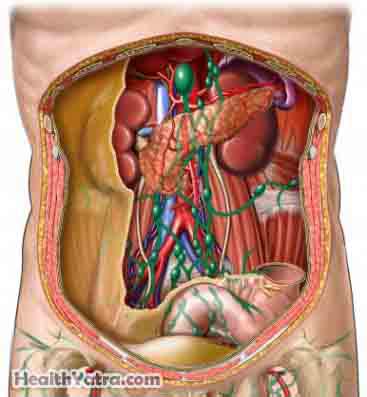Definition
Poliomyelitis (polio) is viral infection. It is now extremely rare in the Western world due to very effective vaccination programs.
Polio is still a significant problem in parts of Africa and Asia. The infection can lead to paralysis.
Causes
Polio is caused by the poliovirus. You can get the virus from contact with:
- An infected person
- Infected saliva or feces
- Contaminated water or sewage
The virus enters the body through the mouth and travels to the intestines. There the virus grows and spreads quickly. The virus can also travels through the blood and lymph fluid. It can then attack and destroys areas of the nervous system which leads to a loss of control of muscles and paralysis.

Risk Factors
You have an increased chance of developing polio if you:
- Never received a polio vaccination or did not complete the vaccinations
- Travel to countries where polio is still common (areas of Africa, Middle East and Asia)
Symptoms
Symptoms can vary. Some may have the virus but never develop symptoms. Others may simply develop flu-like symptoms that last about a week or so. These symptoms may include:
- Headache
- Fever
- Sore throat
- Illness lasts about a week
- Back or neck pain and stiffness
- Muscle tenderness
If the nervous system is affected, symptoms may include:
- Muscle weakness
- Paralysis—usually affects each side to varying amounts or only affects a single side
- Muscles become flaccid (loose, floppy)
- Muscles required for breathing may become paralyzed
- Urinary problems
- Decades later, previously stable muscle weakness may worsen due to postpolio syndrome
Some people with a polio infection can experience symptoms years after the initial attack. This can include muscle weakness, fatigue, breathing and swallowing problems.
Diagnosis
Your doctor will ask about your symptoms and medical history. A physical exam will be done.
To look for the virus you doctor may order:
- Body fluid samples such as throat swabs, rectal swabs, or stool samples
- Spinal tap to check fluid around the spine and brain
Your doctor may also do blood tests to look for antibodies. Antibodies are signs that you body is aware of and fighting the virus.
Treatment
Talk with your doctor about the best plan for you. There are no treatments available to get rid of the virus. Treatment will provide support while your body heals. It will also help you avoid complications.
Bedrest
The doctor may recommend bedrest during the initial phase of the illness.
Fever Control
Medication may be given to lower fever and decrease muscle pain. These may include acetaminophen or nonsteroidal anti-inflammatory medication.
Assisted Ventilation
If the muscles you use to breathe become too weak or paralyzed, you may a ventilator. This machine will take over the work of breathing for you.
Rehabilitation
The virus can cause a tightening of tissue around a joint. A splint will help relax the joint and keep your joints from becoming too stiff. You may also receive physical therapy to keep your limbs moving and decrease muscle loss.
After your fever passes, exercises and therapy will help you regain mobility. They will also help to improve your muscle strength.
Prevention
The best way to prevent polio is by completing the vaccine which is started during childhood years.
Most adults have already received this vaccine when they were children. But, if you are at high risk for getting this infection, you may need a booster vaccine. High risk includes:
- Traveling to areas where polio is present
- Caring for people with polio
- Working in labs where poliovirus is handled
The number of doses that you need depends on how many you have had in the past. Talk to your doctor if you are at high risk.
